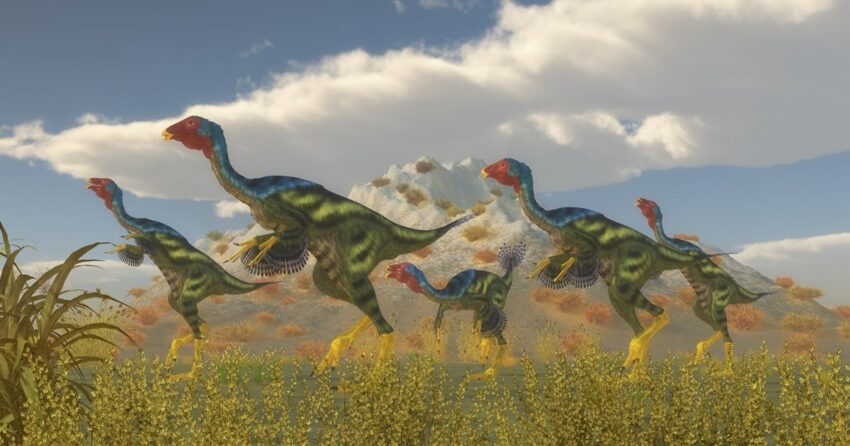The Oviraptor, a dinosaur from the Late Cretaceous period, has captivated paleontologists and enthusiasts alike for decades. Known for its distinctive toothless beak, crested skull, and bird-like appearance, this theropod raises a fascinating question: what did Oviraptor eat? By examining fossil evidence, anatomical features, and modern scientific research, we can piece together the dietary habits of this enigmatic dinosaur.
A Misleading Name
When Oviraptor fossils were first discovered in 1924 in Mongolia’s Gobi Desert, they were found near a clutch of eggs. Early researchers assumed the dinosaur was stealing and eating these eggs, earning it the name “Oviraptor,” meaning “egg thief.” However, subsequent discoveries have shown that the eggs likely belonged to Oviraptor itself, suggesting it was brooding over its own nest rather than raiding another’s.
This revelation cast doubt on the idea of Oviraptor being an egg specialist. Instead, its diet may have been more varied and opportunistic.
Anatomy as a Clue
The physical characteristics of Oviraptor provide valuable insights into its dietary habits:
Toothless Beak: The lack of teeth in Oviraptor’s jaw suggests it relied on a beak to crush, tear, or pick at food. This feature is reminiscent of modern birds, many of which have diverse diets ranging from seeds to small animals.
Strong Jaw Muscles: Evidence of powerful jaw muscles hints that Oviraptor could crush hard substances, such as seeds, nuts, or even shells of small animals.
Crested Skull: While primarily for display or communication, the crest did not play a direct role in feeding but adds to the bird-like anatomy that supports the idea of a varied diet.
Fossil Evidence
Fossilized stomach contents and coprolites (fossilized droppings) are rare but invaluable when studying dinosaur diets. In the case of Oviraptor, direct evidence of its diet remains inconclusive. However, its close relatives, known collectively as oviraptorosaurs, show signs of omnivory. These findings suggest that Oviraptor likely had a flexible diet, consuming both plants and small animals.
Likely Diet Components
Based on current research, Oviraptor’s diet may have included:
Eggs: While not its primary food source, Oviraptor might have opportunistically consumed eggs, given its beak’s suitability for breaking shells.
Seeds and Nuts: The strong beak and jaw muscles point to the possibility of cracking open tough seeds or nuts.
Small Animals: Insects, lizards, and small mammals could have been prey items, consistent with the omnivorous tendencies seen in other theropods.
Plant Material: Fruits, leaves, and other vegetation may have supplemented its diet, especially during scarcity of other food sources.
A Dinosaur of Adaptability
Oviraptor’s likely omnivorous diet highlights its adaptability—a crucial trait for survival in the diverse ecosystems of the Late Cretaceous. This dietary flexibility may have allowed it to thrive in environments where specialized feeders might have struggled.
Conclusion
Far from the egg thief it was once believed to be, Oviraptor emerges as a versatile and opportunistic feeder. Its diverse diet underscores its ecological importance and connection to modern birds, offering a glimpse into the evolutionary bridge between dinosaurs and avians. As new discoveries and technologies advance our understanding, the mystery of Oviraptor’s diet may one day be fully unraveled, but for now, it remains a fascinating chapter in the story of prehistoric life. For more information click the link https://dinorepeat.com/

